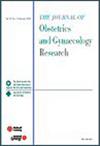The association between age and re-intervention rates in uterine fibroid patients after UsgHIFU therapy: A cohort study
Abstract
Aim
To investigate the correlation between patient age and long-term re-intervention requirements for symptomatic uterine fibroids through stratified age-group analysis following ultrasound-guided high-intensity focused ultrasound (UsgHIFU) ablation therapy.
Methods
This retrospective cohort study evaluated 443 uterine fibroids from the Liuzhou Maternal and Child Healthcare Hospital (2018–2020). Post-ablation re-intervention trajectories were monitored over 36 months following UsgHIFU. Age-stratified analyses included analysis of variance for continuous parameters and χ2 tests for categorical variables. Nonlinear dynamics were modeled using multivariable adaptive regression splines, with threshold regression identifying clinically significant transition points.
Results
Among the 443 patients who underwent UsgHIFU, 35 (7.9%) required re-intervention within 36 postoperative months. Adjusted odds ratio (OR) analysis revealed distinct age-dependent patterns. For patients below the 39-year threshold, each additional year demonstrated a positive association with re-intervention risk (OR = 1.20, 95% confidence interval [CI] 1.05–1.37; p = 0.0079). Conversely, in patients aged ≥39 years, each additional year showed a statistically significant negative association with re-intervention (OR = 0.70, 95% CI 0.56–0.87; p = 0.0012).
Conclusions
In patients with uterine fibroids undergoing UsgHIFU, the correlation between age and the risk of re-intervention after treatment follows an inverted U-shaped curve. Both older and younger age groups are associated with a reduced risk of re-intervention. UsgHIFU is a noninvasive and effective method for treating uterine fibroids. Patients who undergo UsgHIFU treatment experience a low re-intervention rate, with younger patients or those closer to menopause achieving better treatment outcomes.





 求助内容:
求助内容: 应助结果提醒方式:
应助结果提醒方式:


